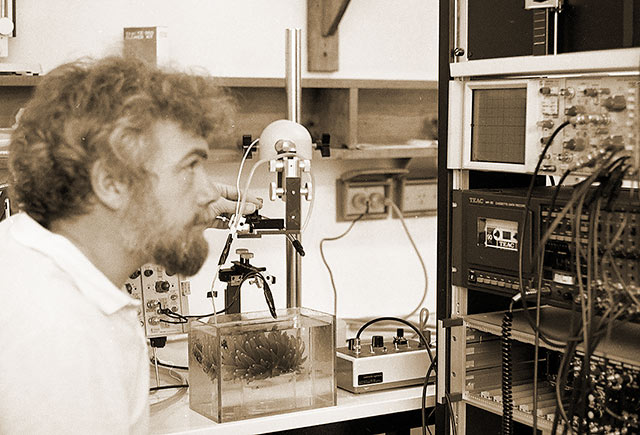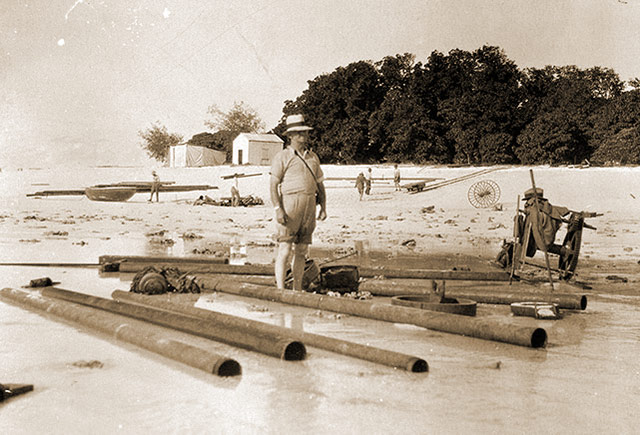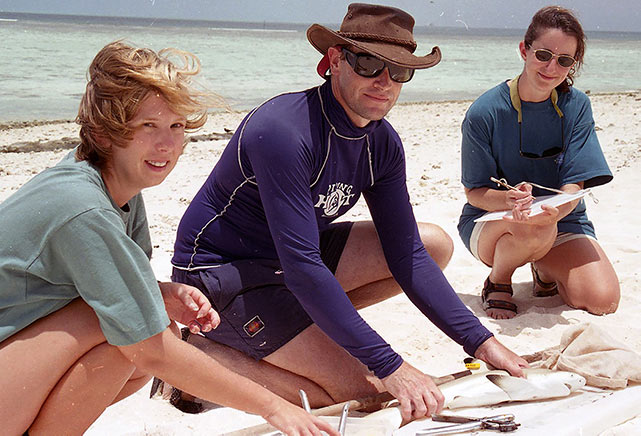Scientific breakthroughs, fire and a NASA space mission – the history of Heron Island Research Station is almost as rich as the biodiversity that surrounds it.
Connection to Sea Country
Heron Island is located in the Sea Country and is about 6000 years old. The Gooreng Gooreng, Gurang, Bailai and Taribelang Bunda peoples are the traditional custodians of the Sea Country around the island. Evidence of Great Barrier Reef Sea Country connections dates to more than 60,000 years. Today, Traditional Owners, government bodies and universities, including UQ, work together to conserve biodiversity, enhance the reef’s resilience, and ensure that cultural heritage and connections to Country endure. When you visit Heron Island and its reefs, consider that you’re travelling through Sea Country that has spiritual importance.
Breaking new ground

1960s–1990s: Research diversifies
During this time, Heron Island became a hub for biological, ecological, geological, chemical and anthropological research – some multi-decadal – on both the reef and cay. The station was frequented by luminaries of Australian and international coral reef science, and home to many groundbreaking studies that yielded influential papers and books. In 1970, UQ officially became the facility’s operational partner, and in 1980 took ownership of it. A raft of marine field courses run by UQ and other universities followed, many which continue today. Photo: Former station Director Associate Professor Ian Lawn in the laboratory, 1986.
Expansion and innovation
A bright legacy
Heron Island Research Station’s bright legacy in research and education continues to burn bright, and its surrounding beauty and biodiversity is being showcased to the universe. At the time of writing, around 18.8 billion kilometres from Earth, NASA’s Voyager 1 spacecraft is flying through space, with an image of Heron Island on board. The image is included in the Voyager Golden Record, which contains photos that portray the diversity of life on Earth and are intended for intelligent extra-terrestrial life forms that may find them.
Photo gallery
See some images that show our growth through the decades. Select each image for a larger view.
-

Dr E. O. Marks at work, 1937. -

Excavating coral, 1940s. -

Accommodation 1950s style. -

A 1960s beach hut. -

Coral reef researchers, 1970. -

Dr Lowry and Mrs J. Lowry at work, 1986. -

Michelle Heupel, Dr Mike Bennett and Tracey Turner tagging reef sharks, 1998. -

Professors Bernard and Sandie Degnan with Sir David Attenborough during filming, 2009. -

Voyager 1 and the Golden Record.
Image credits: UQ Archives; UQ Fryer Library; NASA/JPL-Caltech
